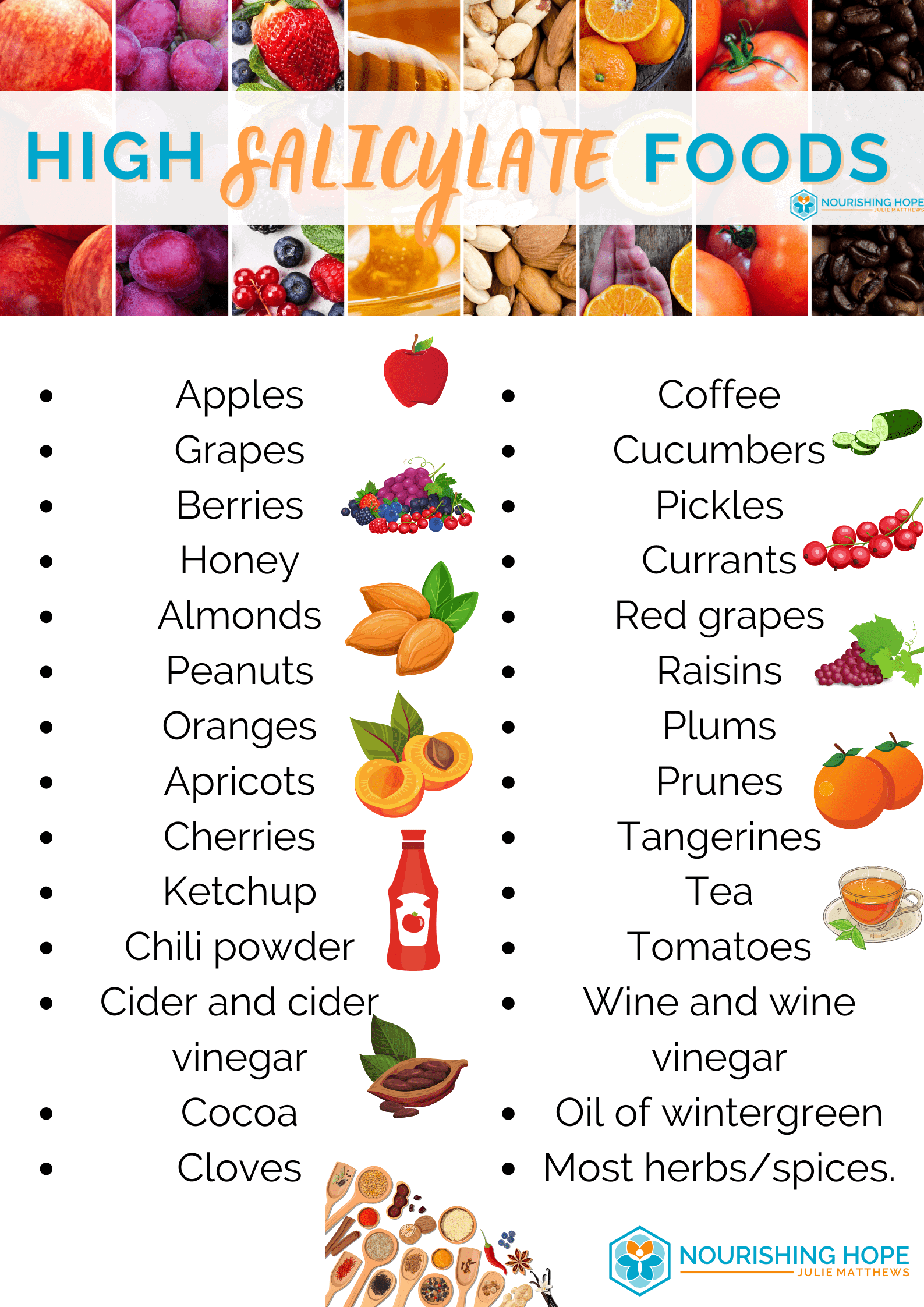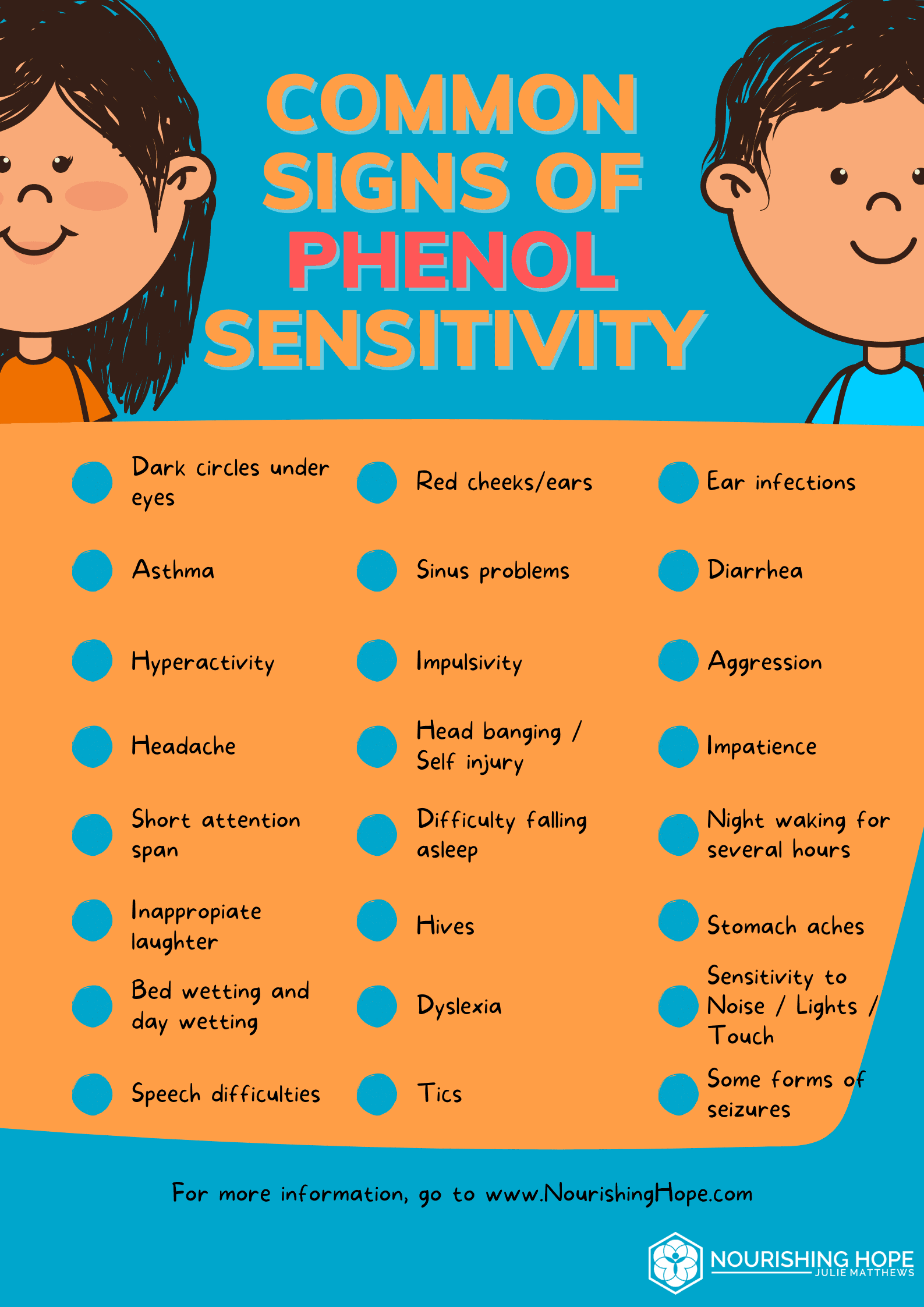The Feingold Diet and Failsafe Diets
The Feingold Diet for ADHD and Autism
The Feingold Diet is an elimination diet that removes artificial food additives, as well as foods high in salicylates. This is one of the diets I have found to be most helpful for people with ADHD and autism in my nutrition practice.
Salicylates are an aspirin-like chemical (biochemically known as phenols) naturally occurring in certain plants. High salicylate foods include apples, grapes, berries, honey, almonds, peanuts, oranges, apricots, cherries, ketchup, chili powder, cider and cider vinegar, cocoa, cloves, coffee, cucumbers, pickles, currants, red grapes, raisins, plums, prunes, tangerines, tea, tomatoes, wine and wine vinegar, oil of wintergreen, and most herbs/spices.

Food additives removed from the Feingold Diet are artificial colors / food dye, artificial flavoring and fragrances, and artificial preservatives such as BHA, BHT, TBHQ. The Feingold diet also removes artificial sweeteners.
Why Do Some People React to These Foods and Food Additives
For some children (and adults too), their bodies have difficulty processing these salicylates (aka phenols). When our chemistry can’t process these compounds, they build up in the body.
Build up of phenols in the system can have negative effects on the brain and body causing behavioral and physical symptoms. This was first discovered by Dr. Ben Feingold when he noticed that these natural salicylates and food additives caused hyperactivity in some children.
Many children with autism, ADHD, and other neurological and immune system disorders commonly have poor sulfation biochemistry and cannot process phenols and salicylates (and sometimes amines and glutamates) well.
Common Symptoms of Salicylate / Phenol Sensitivity
Common physical signs of phenol sensitivity in children include dark circles under eyes, red cheeks/ears, ear infections, asthma, sinus problems, diarrhea, hyperactivity, impulsivity, aggression, headache, head banging/self-injury, impatience, short attention span, difficulty falling asleep, night walking for several hours, inappropriate laughter, hives, stomach aches, bed wetting and day wetting, dyslexia, sensitivity to noise/lights/touch, speech difficulties, tics, and some forms of seizures.

The Failsafe Diet
Another low salicylate diet, the Failsafe Diet, removes salicylates, as well as amines and glutamates (other related food chemicals).
FAILSAFE is an acronym for “free of additives, low in salicylates, amines and flavor enhancers,” coined and championed by Sue Dengate, and is based on the low-chemical elimination diet created by the Royal Prince Alfred Hospital (RPAH) Allergy Unit in Australia.
I find that the Failsafe Diet works well for people who are more sensitive to these naturally occurring food chemicals / compounds.
Implementing a Salicylate, Amine, and Glutamate Diet
The Failsafe diet is more restrictive and has a larger list of foods to avoid than the Feingold diet, both because the Feingold diet only reduces salicylates (not amines or glutamates) and because the Feingold list only removes those foods they find their members react to, rather than the milligrams of salicylate in foods. And the Failsafe diet is based on the most strict version of the RPAH diet.
While the Feingold and Failsafe diets have different food lists and implementations, generally speaking they both involve removing food chemicals and then trial them through reintroduction to determine the individual needs.
After years of working with all of these diets, I (Julie Matthews, the founder of Nourishing Hope and the BioIndividual Nutrition Institute) have created a hybrid version of the Low Salicylate, Amine and Glutamate diet called the Low SAG DietTM that I find to work best with my clients with Autism and ADHD.
I also teach parents and individuals in my Nourishing Hope for Healing Kids program and practitioners in my BioIndividual Nutrition Training that after relieving the burden on the body of these foods with a low salicylate, amine, and glutamate diet, we can work on improving tolerance to these foods (by addressing the underlying biochemistry and factors that deplete it) so the diet can be expanded over time, as these foods have great nutritional value (when tolerated).
You can learn more about these and other special therapeutic diets here. And you can find Low Salicylate and Low Salicylate, Amine, and Glutamate Diet recipes I have created.

